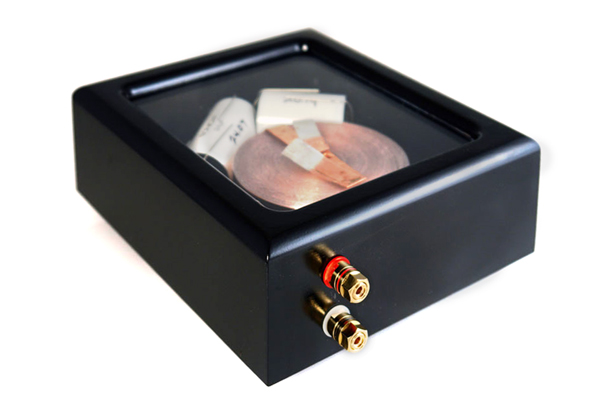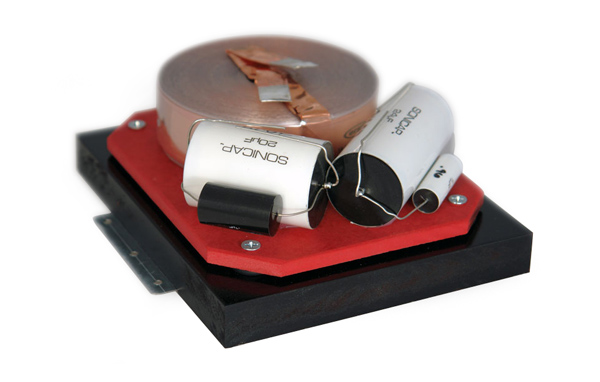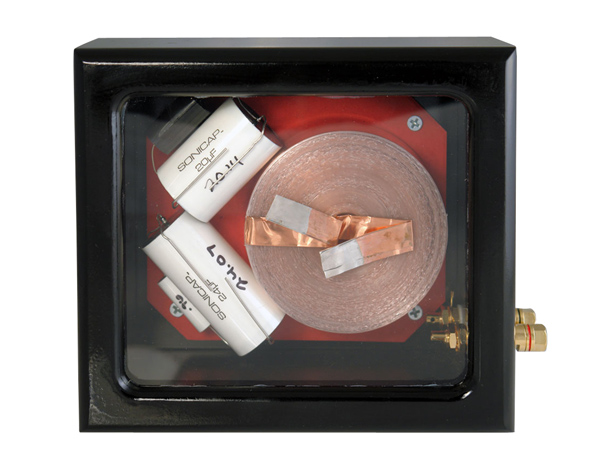Magnepan 1.6 Just call the Skiing Ninja!
By Jeff Dorgay With Magnepan introducing their new 1.7 to replace the 1.6 that has been a staple of their line for about 15 years, many loyal Magnepan owners are probably asking themselves if they should make the move and upgrade to the latest. Knowing how slow Magnepan is (or perhaps cautious and conservative) with upgrades; there is certainly some promise on the horizon for this new speaker that will now feature a “quasi ribbon” driver for the bass panel as well. However, the original 1.6 is still a solid speaker with a lot of life left in it and let’s face it, who wants to sign up for shipping a hundred pounds and going through the audiogon hassle, right?
With Magnepan introducing their new 1.7 to replace the 1.6 that has been a staple of their line for about 15 years, many loyal Magnepan owners are probably asking themselves if they should make the move and upgrade to the latest. Knowing how slow Magnepan is (or perhaps cautious and conservative) with upgrades; there is certainly some promise on the horizon for this new speaker that will now feature a “quasi ribbon” driver for the bass panel as well. However, the original 1.6 is still a solid speaker with a lot of life left in it and let’s face it, who wants to sign up for shipping a hundred pounds and going through the audiogon hassle, right?
This hesitance by Magnepan to offer constant product updates is what has kept their resale high. A quick glimpse at Audiogon reveals that a used pair of 1.6’s can still command $1,200, though this will probably drop now that the 1.7’s are hitting the market. Considering a new pair would only set you back $1,699 at your local dealer, even if you paid retail, this is unheard of value.
But, audiophiles are like terriers, always sniffing around for something newer and better. I’m going to stick my neck out and guess that there are going to be a lot of used 1.6’s on the market for the next year or two and they will probably be a lot less than $1,200. Let’s face it, how many of you really want to deal with shipping these monsters, right? What if you could just easily improve what you already have, or perhaps score a great used pair of 1.6’s locally from someone who has lobsters in their pants, itching to buy 1.7’s?
Those of you that have 1.6’s are infinitely familiar with the speakers strengths: a big, big soundstage and exceptionally good upper bass performance along with perhaps the best coherence in the Magnepan line because they are only a two way speaker. The 1.6 also has its weaknesses, primarily the huge power requirements, limited dynamics and a haziness to the overall presentation compared to an electrostatic.
Pros and cons weighed in, if you have enough amplifier power, the Magnepan 1.6 is still one of the best values in high-end audio. But, there’s plenty of room for improvement, as we shall see.
Typically, I am not a fan of modding gear, but in a case like this where the basic engineering of the product is so robust, that swapping a few carefully chosen parts for ones of considerably higher quality, while not disturbing the original design ethos can take the product to a much higher level, I’m ready to get out the soldering iron. And that’s exactly what this mod does.
Enter the Ninja
Sean at the Skiing Ninja can take you to the next level of Magnepan performance, with his crossover upgrade. Taking the crossover out of the panel itself solves a few issues. No longer pinched by space requirements, the small external crossover abandons the relatively inexpensive parts used in the stock crossover and replaces them with copper foil inductors, Sonicap capacitors and a point to point wiring scheme. A pair of these gorgeous little boxes will only set you back $595 and is plug and play. 
You will need to do a little bit of brain surgery, but you should be able to have the crossovers swapped in about an hour for both speakers. If you’ve never modified a piece of gear, you might be a little queasy about taking a pair of diagonal cutters to the crossover networks in your 1.6’s, but trust me, you’ll be glad you did.
The Ninja crossovers arrive in a tidy little box that is about 8 x 8 x 3 inches and can be ordered in a range of colors. I went for basic black and that worked just fine. You will have to remove the black panel that contains the fuse holder to get at the crossover inside. Of course this will void your warranty, but I’m guessing by now your speakers are out of warranty anyway. I also chose to abandon the original bi-wiring concept of the speakers, which I always felt was another weakness, requiring the pain of more banana plugs. Granted, many Magnepan owners swear by the bi-wiring method of connecting them, but the Ninja approach works much better and is much easier to attach decent speaker cable to.
Saying goodbye to the fuse felt a little scary, but again, the sonic gains outweigh the slight bit of protection the fuse offers. Just make sure you have plenty of clean power on tap… Once the old crossover is removed and the new one in place, via four spade lugs you are ready to roll.
A sonic revelation
Those big teflon capacitors will take about 500 hours to sound their best, so out of the box you will only notice a slight improvement in focus and midrange clarity, but at the 200 hour mark, the speakers sound like a blanket has been lifted from them, and they will improve steadily until about the 500 hour mark. To be sure I wasn’t just a victim of the placebo effect, I borrowed a friend’s stock 1.6’s so a direct comparison could be performed. Fortunately, the 1.6’s are pretty easy to move back and forth.
The improvements are substantial, but I found the biggest gain was in the midrange clarity. Now the 1.6’s were getting more into the electrostat range, with that haze in the original speaker a thing of the past. Playing your favorite vocal tracks will really bring this home. When listening to Johnny Cash’s “Delia’s Gone” from American Recordings, he goes from singing in the other room on the stock speakers to slightly in front of them, with much better separation between Cash’s vocal and his acoustic guitar. Same thing with John Hiatt on the title track of Slow Turnin, Hiatt’s voice comes right out of the mix where it had been somewhat buried in the past.
Though not quite as dramatic, as the capacitors break in, you will notice an even better blend between the woofer and tweeter panels, giving these speakers a higher degree of coherence. They sound a lot more like Quad 57’s (albeit much more robust ones) now in terms of the “midrange magic.”
As a result of this the mid/tweeter ribbon driver is less pronounced than in the past, giving everything from the midrange up less grain. It’s readily apparent, but having the originals handy made it that much easier to discern. Your favorite violin or piano disc should expose this immediately. I used the new disc from The Jung Trio on Groove Note records, Dvorak Trio in F Minor, Op. 65 and was amazed at how much more realistic the violins sounded, again thinking about my Quads while listening.
I had an equally satisfying experience when going through my favorite Keith Jarrett albums. The piano took on a more natural texture, with more nuance than before. It was much easier to hear the hall size when listening to the Sun Bear Concerts, thanks to an increase in low level detail, letting the piano’s notes fade off into the background with finer gradation than before. Again, a quick swap back to the stock speakers put things in perspective right away.
Last but not least, there is more texture in the lower bass region and even the upper bass speed is improved. The speaker just sounds faster overall with more bass weight and attack. A quick frequency sweep did not reveal the panel going any deeper, but the bass sounded more natural throughout the range. No, you still can’t play Snoop Dogg convincingly with the Ninja mods, but I’m guessing that isn’t why you bought Magnepans in the first place. Those of you that live on a steady diet of female vocal music will be spellbound by this increase in performance.
More of what you love with no guilt
Whether you’re a long term 1.6 owner who would like more performance, or someone who cashes in on the wave of people trading up to 1.7’s, the Skiing Ninja modified 1.6’s are a fantastic speaker, offering incredible performance at a bargain price. I wouldn’t be surprised if these even outperform the new 1.7’s. 
The Ninja mod builds on all the strengths of this speaker and has no drawbacks. Using the modded speakers with my reference McIntosh MC1.2KW’s, they consistently held their own in a six-figure reference system as long as I was listening to music that played to their strengths.
I can’t think of a better upgrade to a system based on a pair of these speakers for anywhere near $600. If anything, once you get the Ninja crossovers in place, you might be looking for a better/bigger amplifier to take advantage of the increased resolution. And cool cat that he is, the Ninja gives you 60 days to audition the mod with a money back guarantee. I can’t imagine anyone sending these back.
Highly recommended.
The Skiing Ninja Magenpan 1.6 mod
MSRP: $595
Peripherals
Analog Source TW Acustic Raven TWO turntable w/SME iV.Vi arm, Dynavector XV-1s cartridge and Nagra VPS phono preamp with VFS platform and Red Wine Audio Black Lightning power supply.
Digital Source Naim CD555
Preamplifier Burmester 011
Power Amplifier McIntosh MC1.2KW monoblocks
Cable Shunyata Aurora interconnects, Shunyata Stratos SP speaker cable
Power Running Springs Dmitri and Maxim power conditioners



